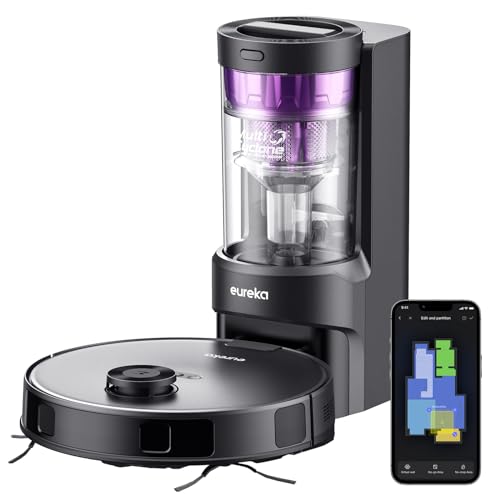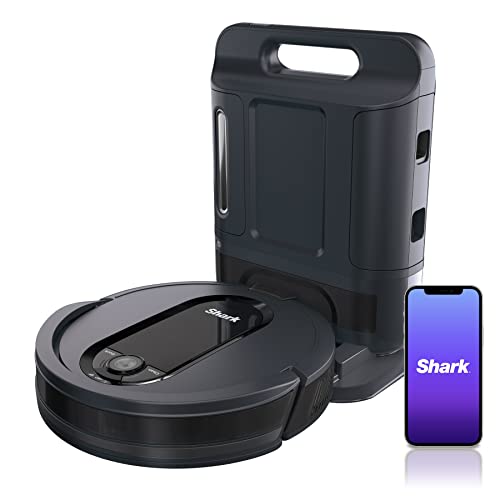See What Bagless Self-Navigating Vacuums Tricks The Celebs Are Using
페이지 정보

본문
 bagless compact vacuums Self-navigating vacuums (lamerpension.co.kr)
bagless compact vacuums Self-navigating vacuums (lamerpension.co.kr)bagless suction vacuums self-navigating vacuums come with the ability to hold up to 60 days worth of dust. This means that you don't have to worry about buying and disposing of new dust bags.
When the robot docks at its base, it will transfer the debris to the base's dust bin. This process is noisy and could be alarming for pets or people who are nearby.
Visual Simultaneous Localization and Mapping
While SLAM has been the focus of much technical research for decades but the technology is becoming increasingly accessible as sensors' prices decrease and processor power increases. One of the most visible applications of SLAM is in robot vacuums, which use many sensors to navigate and build maps of their environment. These quiet, circular vacuum cleaners are among the most used robots that are used in homes today. They're also extremely efficient.
SLAM is a system that detects landmarks and determining the robot's location in relation to them. Then, it combines these data into an 3D map of the environment that the robot can follow to get from one location to the next. The process is iterative, with the robot adjusting its estimation of its position and mapping as it gathers more sensor data.
The robot will then use this model to determine where it is in space and to determine the boundaries of the space. The process is very similar to how the brain navigates unfamiliar terrain, using the presence of landmarks to help make sense of the terrain.
While this method is extremely efficient, it does have its limitations. Visual SLAM systems can only see an insignificant portion of the surrounding environment. This limits the accuracy of their mapping. Additionally, visual SLAM must operate in real-time, which requires high computing power.
Fortunately, a variety of different approaches to visual SLAM have been developed each with its own pros and pros and. One method that is popular is known as FootSLAM (Focussed Simultaneous Localization and Mapping), which uses multiple cameras to boost the system's performance by using features to track features in conjunction with inertial odometry and other measurements. This method requires higher-quality sensors than visual SLAM, and is difficult to maintain in dynamic environments.
LiDAR SLAM, also known as Light Detection And Ranging (Light Detection And Ranging) is a different approach to visual SLAM. It makes use of lasers to identify the geometry and objects of an environment. This method is especially useful in areas that are cluttered and where visual cues could be lost. It is the preferred method of navigation for autonomous robots in industrial settings like factories and warehouses and also in self emptying robot vacuum bagless-driving cars and drones.
LiDAR
When you are looking to purchase a robot vacuum, the navigation system is one of the most important things to take into account. Without high-quality navigation systems, a lot of robots will struggle to find their way around the home. This could be a challenge particularly if you have large rooms or furniture that needs to be moved out of the way for cleaning.
While there are several different technologies that can aid in improving navigation in robot vacuum cleaners, LiDAR has been proven to be the most efficient. This technology was developed in the aerospace industry. It uses a laser scanner to scan a room and create a 3D model of its surroundings. LiDAR can help the robot navigate through obstacles and planning more efficient routes.
The primary benefit of LiDAR is that it is extremely accurate in mapping, as compared to other technologies. This is a major advantage as the robot is less prone to crashing into objects and spending time. In addition, it can assist the robot to avoid certain objects by establishing no-go zones. For instance, if have a wired coffee table or desk, you can use the app to set a no-go zone to prevent the robot from going near the cables.
Another advantage of LiDAR is that it can detect walls' edges and corners. This is extremely useful when using Edge Mode. It allows robots to clean the walls, which makes them more efficient. This can be useful for climbing stairs since the robot will avoid falling down or accidentally straying across the threshold.
Gyroscopes are yet another feature that can assist with navigation. They can stop the robot from bumping against objects and help create an initial map. Gyroscopes are generally less expensive than systems like SLAM that use lasers and still deliver decent results.
Cameras are among other sensors that can be utilized to aid robot vacuums in navigation. Some robot vacuums use monocular vision to identify obstacles, while others utilize binocular vision. These allow the robot to detect objects and even see in darkness. However, the use of cameras in robot vacuums raises issues about privacy and security.
Inertial Measurement Units (IMU)
IMUs are sensors that monitor magnetic fields, body-frame accelerations and angular rates. The raw data is then filtered and merged to generate information on the attitude. This information is used to determine robots' positions and to control their stability. The IMU industry is growing due to the use these devices in virtual reality and augmented-reality systems. Additionally the technology is being utilized in UAVs that are unmanned (UAVs) to aid in stabilization and navigation purposes. IMUs play an important part in the UAV market that is growing quickly. They are used to combat fires, find bombs, and carry out ISR activities.
IMUs are available in a variety of sizes and prices, according to their accuracy as well as other features. Typically, IMUs are made from microelectromechanical systems (MEMS) that are integrated with a microcontroller and a display. They are also designed to be able to withstand extreme temperatures and high vibrations. They can also operate at high speeds and are resistant to interference from the outside making them a crucial instrument for robotics systems as well as autonomous navigation systems.
There are two main kinds of IMUs. The first collects raw sensor data and stores it on an electronic memory device, such as an mSD card, or through wired or wireless connections to a computer. This type of IMU is referred to as a datalogger. Xsens' MTw IMU, for instance, comes with five accelerometers with dual-axis satellites as well as an underlying unit that records data at 32 Hz.
The second type of IMU converts sensor signals into processed data that can be transmitted via Bluetooth or a communications module to a PC. The information is then interpreted by an algorithm for learning supervised to identify symptoms or activity. As compared to dataloggers and online classifiers need less memory space and increase the autonomy of IMUs by removing the requirement for sending and storing raw data.
IMUs are subject to drift, which can cause them to lose accuracy with time. IMUs should be calibrated on a regular basis to avoid this. They are also susceptible to noise, which can cause inaccurate data. The noise could be caused by electromagnetic interference, temperature fluctuations and vibrations. To mitigate these effects, IMUs are equipped with a noise filter and other tools for processing signals.
Microphone
Certain robot vacuums have an audio microphone, which allows users to control the vacuum remotely with your smartphone or other smart assistants such as Alexa and Google Assistant. The microphone can also be used to record audio within your home, and some models can even act as an alarm camera.
The app can be used to set up schedules, designate cleaning zones and monitor the progress of the cleaning process. Some apps allow you to create a 'no go zone' around objects that your robot should not touch. They also come with advanced features such as detecting and reporting the presence of a dirty filter.
Modern robot vacuums have a HEPA filter that removes dust and pollen. This is great for those with respiratory or allergies. Many models come with a remote control that allows users to operate them and establish cleaning schedules and a lot of them can receive over-the-air (OTA) firmware updates.
One of the main differences between the newer robot vacuums and older ones is in their navigation systems. The majority of cheaper models, such as the Eufy 11s, use rudimentary bump navigation that takes a lengthy time to cover your entire home, and isn't able to accurately identify objects or prevent collisions. Some of the more expensive versions include advanced mapping and navigation technologies that cover a room in a shorter amount of time and also navigate narrow spaces or even chair legs.
The most effective robotic vacuums utilize sensors and laser technology to build detailed maps of your rooms, to ensure that they are able to efficiently clean them. Some robotic vacuums also have an all-round video camera that allows them to view the entire home and navigate around obstacles. This is particularly useful for homes with stairs since the cameras can stop them from accidentally descending the staircase and falling down.
A recent hack conducted by researchers, including a University of Maryland computer scientist revealed that the LiDAR sensors in smart robotic vacuums can be used to collect audio from your home, despite the fact that they're not intended to be microphones. The hackers employed the system to capture the audio signals that reflect off reflective surfaces, like television sets or mirrors.

- 이전글РОУЗБАД ЛЭЙН (2023) СМОТРЕТЬ ОНЛАЙН БЕСПЛАТНО 24.09.03
- 다음글5 Myths About Mazda 3 Key Fob That You Should Stay Clear Of 24.09.03
댓글목록
등록된 댓글이 없습니다.

